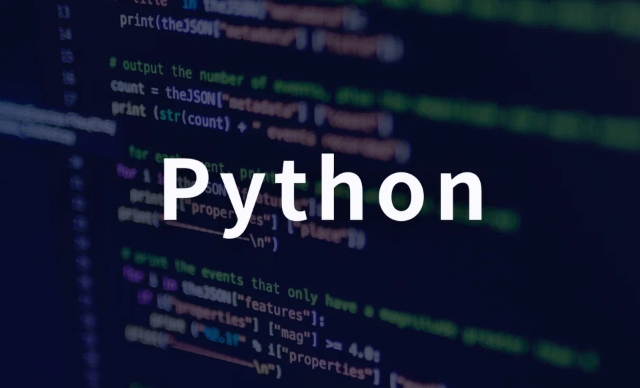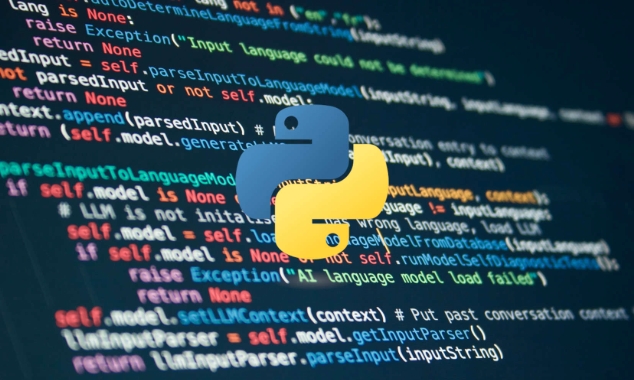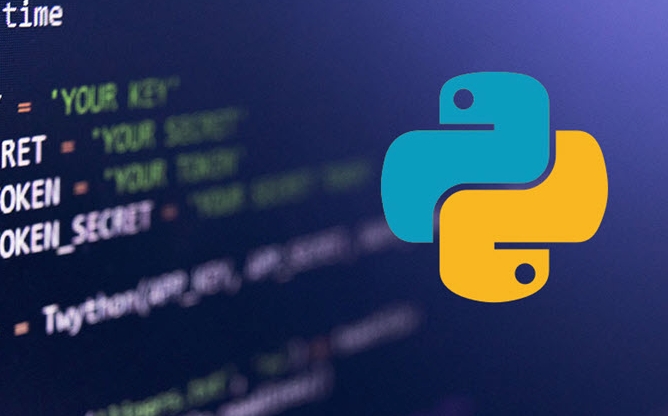How to use default_factory in Python dataclasses?
Jul 15, 2025 am 02:39 AMWhen do you need to use default_factory? When you want to assign a default mutable object to a field, you should use default_factory. How to set default value with default_factory? You can pass any parameter-free callable object to default_factory, such as built-in types, functions, or lambda expressions. Common usages include: 1. Initialize to an empty list: default_factory=list; 2. Initialize to an empty dictionary: default_factory=dict; 3. Initialize to a specific structure: default_factory=lambda: [1, 2, 3]; 4. Use custom functions to generate complex objects. Common misunderstandings and precautions include: 1. Do not directly pass objects such as field(default=[]); 2. Use factory functions such as field(default_factory=list); 3. Do not pass functions with parameters; 4. You can use lambda, but pay attention to scope issues. Applicable scenarios include: dynamic data structures in configuration items, nested object collections in data models, cache or status record fields, especially when writing API models, ORM mappings, and configuration classes. Use default_factory rationally to avoid bugs caused by reference sharing and make the code clearer and safer.

In Python's dataclasses module, if you want to set a default value for a field, and this default value is a mutable object (such as a list or a dictionary), direct assignment may cause multiple instances to share the same object, resulting in unexpected results. At this time, default_factory comes in handy.

When do you need to use default_factory?
When you want to assign a default mutable object to a field, you should use default_factory . It accepts a parameterless function as a parameter, and it will be called every time the class instance is created to generate a new object.
For example:

from dataclasses import dataclass, field
@dataclass
class MyClass:
items: list = field(default_factory=list) In this way, every time a new MyClass() instance is created, list() will be called to create an empty list, instead of sharing a list for all instances.
How to set default value with default_factory?
You can pass any non-argument callable object to default_factory , such as built-in types, functions, or lambda expressions.

Common usages include:
- Initialize to empty list:
default_factory=list - Initialize to an empty dictionary:
default_factory=dict - Initialize to a specific structure:
default_factory=lambda: [1, 2, 3] - Generate complex objects using custom functions
For example:
from dataclasses import dataclass, field
def default_tags():
return ["python", "code"]
@dataclass
class Article:
title: str
tags: list = field(default_factory=default_tags)
a = Article("Intro to Python")
b = Article("Advanced Tips", tags=["tips"]) tags of the two instances here are independent and will not affect each other.
Common misunderstandings and precautions
There are several error-prone places you may encounter:
- ? Do not pass objects directly: for example
field(default=[]), which will cause multiple instances to share the same list. - ? To use factory functions: such as
field(default_factory=list)to ensure that it is a new object every time. - ? Do not pass functions with parameters:
default_factorymust be parameterless, otherwise an error will be reported. - ? You can use lambda, but pay attention to scope issues.
In addition, if you use the __init__ method or inheritance relationship, you should also pay attention to whether the fields are initialized correctly.
What are the applicable scenarios?
default_factory is best used to deal with default values that require "independent per instance", such as:
- Dynamic data structures in configuration items
- Nested collection of objects in the data model
- Cache, status record and other fields
Especially when writing API models, ORM mappings, and configuration classes, this type of requirement is very common.
Basically that's it. Using default_factory rationally can avoid many bugs caused by reference sharing and make the code clearer and safer.
The above is the detailed content of How to use default_factory in Python dataclasses?. For more information, please follow other related articles on the PHP Chinese website!

Hot AI Tools

Undress AI Tool
Undress images for free

Undresser.AI Undress
AI-powered app for creating realistic nude photos

AI Clothes Remover
Online AI tool for removing clothes from photos.

Clothoff.io
AI clothes remover

Video Face Swap
Swap faces in any video effortlessly with our completely free AI face swap tool!

Hot Article

Hot Tools

Notepad++7.3.1
Easy-to-use and free code editor

SublimeText3 Chinese version
Chinese version, very easy to use

Zend Studio 13.0.1
Powerful PHP integrated development environment

Dreamweaver CS6
Visual web development tools

SublimeText3 Mac version
God-level code editing software (SublimeText3)
 PHP calls AI intelligent voice assistant PHP voice interaction system construction
Jul 25, 2025 pm 08:45 PM
PHP calls AI intelligent voice assistant PHP voice interaction system construction
Jul 25, 2025 pm 08:45 PM
User voice input is captured and sent to the PHP backend through the MediaRecorder API of the front-end JavaScript; 2. PHP saves the audio as a temporary file and calls STTAPI (such as Google or Baidu voice recognition) to convert it into text; 3. PHP sends the text to an AI service (such as OpenAIGPT) to obtain intelligent reply; 4. PHP then calls TTSAPI (such as Baidu or Google voice synthesis) to convert the reply to a voice file; 5. PHP streams the voice file back to the front-end to play, completing interaction. The entire process is dominated by PHP to ensure seamless connection between all links.
 How to use PHP combined with AI to achieve text error correction PHP syntax detection and optimization
Jul 25, 2025 pm 08:57 PM
How to use PHP combined with AI to achieve text error correction PHP syntax detection and optimization
Jul 25, 2025 pm 08:57 PM
To realize text error correction and syntax optimization with AI, you need to follow the following steps: 1. Select a suitable AI model or API, such as Baidu, Tencent API or open source NLP library; 2. Call the API through PHP's curl or Guzzle and process the return results; 3. Display error correction information in the application and allow users to choose whether to adopt it; 4. Use php-l and PHP_CodeSniffer for syntax detection and code optimization; 5. Continuously collect feedback and update the model or rules to improve the effect. When choosing AIAPI, focus on evaluating accuracy, response speed, price and support for PHP. Code optimization should follow PSR specifications, use cache reasonably, avoid circular queries, review code regularly, and use X
 python seaborn jointplot example
Jul 26, 2025 am 08:11 AM
python seaborn jointplot example
Jul 26, 2025 am 08:11 AM
Use Seaborn's jointplot to quickly visualize the relationship and distribution between two variables; 2. The basic scatter plot is implemented by sns.jointplot(data=tips,x="total_bill",y="tip",kind="scatter"), the center is a scatter plot, and the histogram is displayed on the upper and lower and right sides; 3. Add regression lines and density information to a kind="reg", and combine marginal_kws to set the edge plot style; 4. When the data volume is large, it is recommended to use "hex"
 PHP integrated AI emotional computing technology PHP user feedback intelligent analysis
Jul 25, 2025 pm 06:54 PM
PHP integrated AI emotional computing technology PHP user feedback intelligent analysis
Jul 25, 2025 pm 06:54 PM
To integrate AI sentiment computing technology into PHP applications, the core is to use cloud services AIAPI (such as Google, AWS, and Azure) for sentiment analysis, send text through HTTP requests and parse returned JSON results, and store emotional data into the database, thereby realizing automated processing and data insights of user feedback. The specific steps include: 1. Select a suitable AI sentiment analysis API, considering accuracy, cost, language support and integration complexity; 2. Use Guzzle or curl to send requests, store sentiment scores, labels, and intensity information; 3. Build a visual dashboard to support priority sorting, trend analysis, product iteration direction and user segmentation; 4. Respond to technical challenges, such as API call restrictions and numbers
 python list to string conversion example
Jul 26, 2025 am 08:00 AM
python list to string conversion example
Jul 26, 2025 am 08:00 AM
String lists can be merged with join() method, such as ''.join(words) to get "HelloworldfromPython"; 2. Number lists must be converted to strings with map(str, numbers) or [str(x)forxinnumbers] before joining; 3. Any type list can be directly converted to strings with brackets and quotes, suitable for debugging; 4. Custom formats can be implemented by generator expressions combined with join(), such as '|'.join(f"[{item}]"foriteminitems) output"[a]|[
 python connect to sql server pyodbc example
Jul 30, 2025 am 02:53 AM
python connect to sql server pyodbc example
Jul 30, 2025 am 02:53 AM
Install pyodbc: Use the pipinstallpyodbc command to install the library; 2. Connect SQLServer: Use the connection string containing DRIVER, SERVER, DATABASE, UID/PWD or Trusted_Connection through the pyodbc.connect() method, and support SQL authentication or Windows authentication respectively; 3. Check the installed driver: Run pyodbc.drivers() and filter the driver name containing 'SQLServer' to ensure that the correct driver name is used such as 'ODBCDriver17 for SQLServer'; 4. Key parameters of the connection string
 python pandas melt example
Jul 27, 2025 am 02:48 AM
python pandas melt example
Jul 27, 2025 am 02:48 AM
pandas.melt() is used to convert wide format data into long format. The answer is to define new column names by specifying id_vars retain the identification column, value_vars select the column to be melted, var_name and value_name, 1.id_vars='Name' means that the Name column remains unchanged, 2.value_vars=['Math','English','Science'] specifies the column to be melted, 3.var_name='Subject' sets the new column name of the original column name, 4.value_name='Score' sets the new column name of the original value, and finally generates three columns including Name, Subject and Score.
 Optimizing Python for Memory-Bound Operations
Jul 28, 2025 am 03:22 AM
Optimizing Python for Memory-Bound Operations
Jul 28, 2025 am 03:22 AM
Pythoncanbeoptimizedformemory-boundoperationsbyreducingoverheadthroughgenerators,efficientdatastructures,andmanagingobjectlifetimes.First,usegeneratorsinsteadofliststoprocesslargedatasetsoneitematatime,avoidingloadingeverythingintomemory.Second,choos






